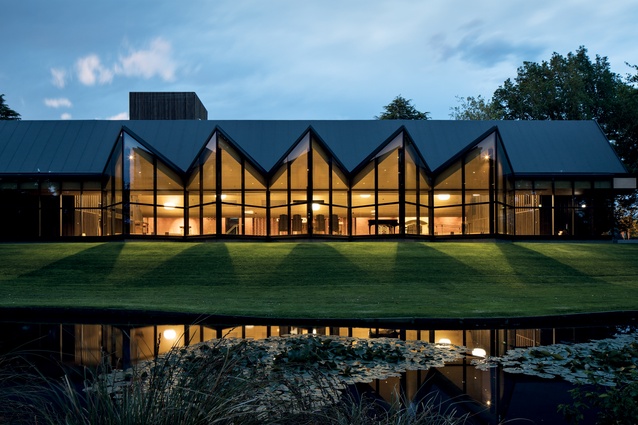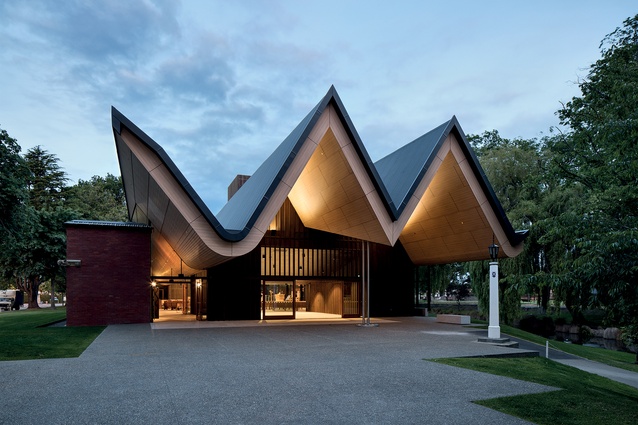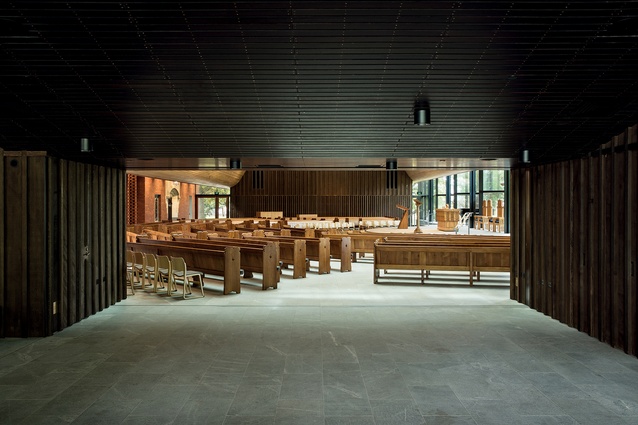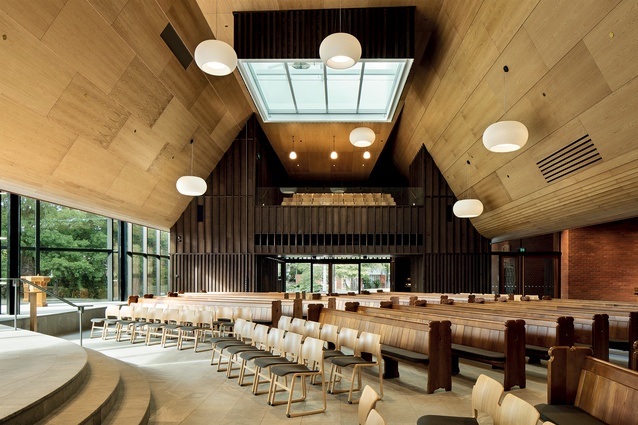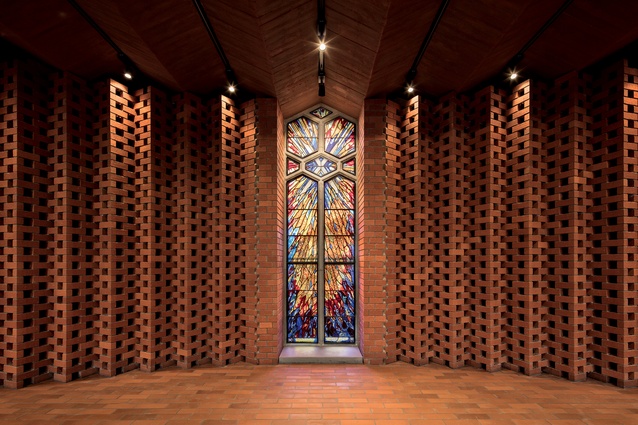2018 John Scott Award for Public Architecture
Architectus’ St Andrew’s College Centennial Chapel in Christchurch subtly weaves recycled salvaged materials and heritage items into a distinctively modern form.
Jury Commentary
Richard Goldie, Andrea Bell, Amy Muir and John Melhuish
The new chapel at St Andrew’s College overtly references its much-loved quake-ruined predecessor through the incorporation of numerous salvaged heritage elements. This integration is achieved with a rare appropriateness and thoroughgoing integrity. The new chapel is accessible to the wider community, as well as the college of which it is the heart, and is exemplary in a city still in recovery, in the way in which it responds to the needs of the present while acknowledging the legacy of the past.
– NZIA Citation
“This project deals with the memory of the previous building beautifully,” says Andrea Bell. “The trace of the linear pathway of the original chapel is strongly reinforced in both the exquisitely detailed brick memory wall that holds the precious remnants of the old building and the folding roof. But, then, the building very subtly turns you away from that axis and refocuses you to a new direction: to the river, hills and campus. It is an incredibly sophisticated piece of work, which took my breath away on several occasions.”
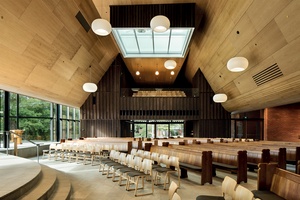
“I wasn’t sure how a chapel and multi-use community space would work,” said John Melhuish, “but it unfolds and all seems so obvious. It’s an inspired and intelligent composition, with strong and obvious moves coming together like a concerto. There was quite a lot going on and a few different materials; it takes a good conductor to get that to work but all the parts came together with a harmony.”
“As you enter the foyer, the traditional axis between entry and nave is skewed, as the space is twisted on its side, expanding out towards the altar and reorienting the focus,” says Amy Muir. “The large awning at the front of the building defines a civic importance, denoting entry as well as providing a generous forecourt for people to congregate.”
“The way that the programme is managed, the consideration and yet abstraction of the traditional cathedral forms, the memorialising and celebration of elements of the previous chapel, captured and rehoused, is deftly managed, ”says Richard Goldie. “It achieves a kind of spirituality that one hopes to see at this level of architecture. It was exquisitely handled and subtle, with layers of meaning going through the entire building, making for a profoundly satisfying work of architecture.”
See the full list of winners of the 2018 New Zealand Architecture Awards here.

